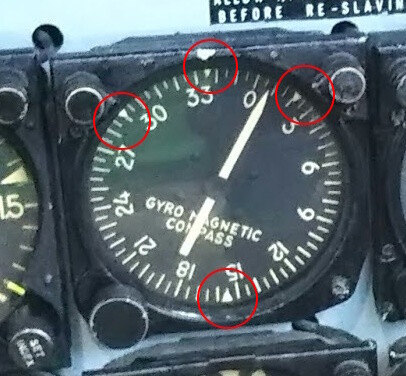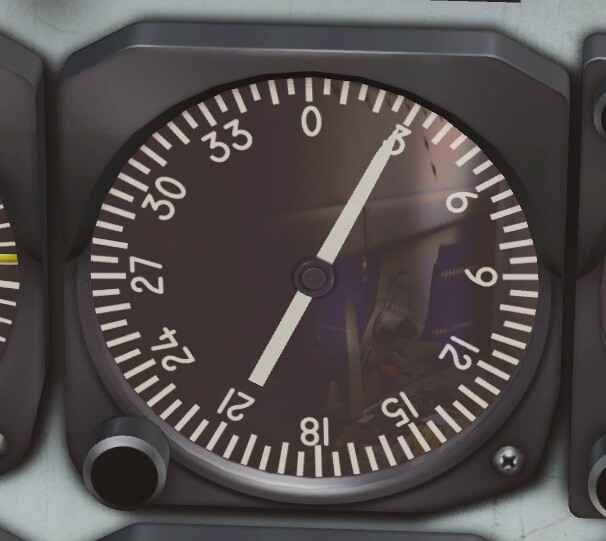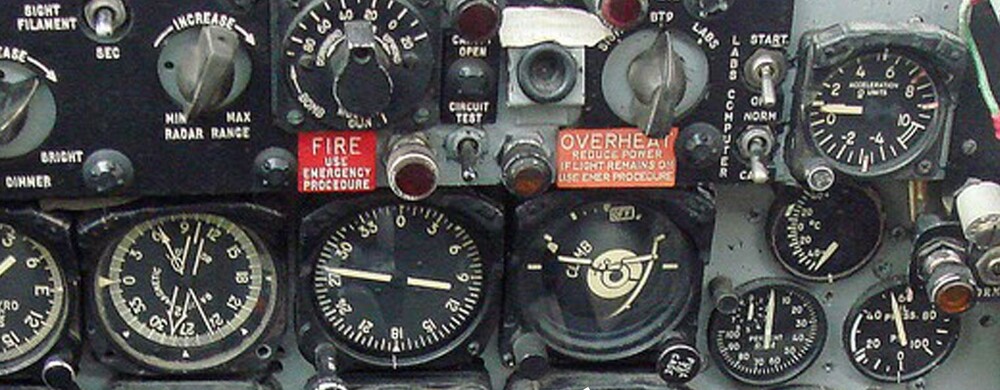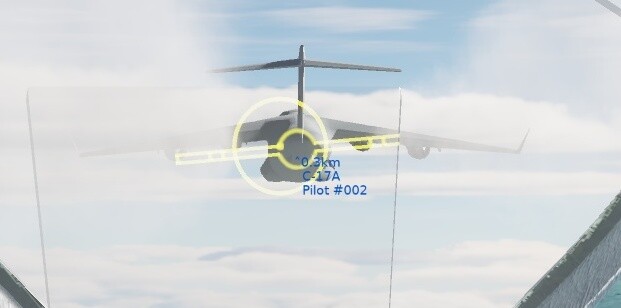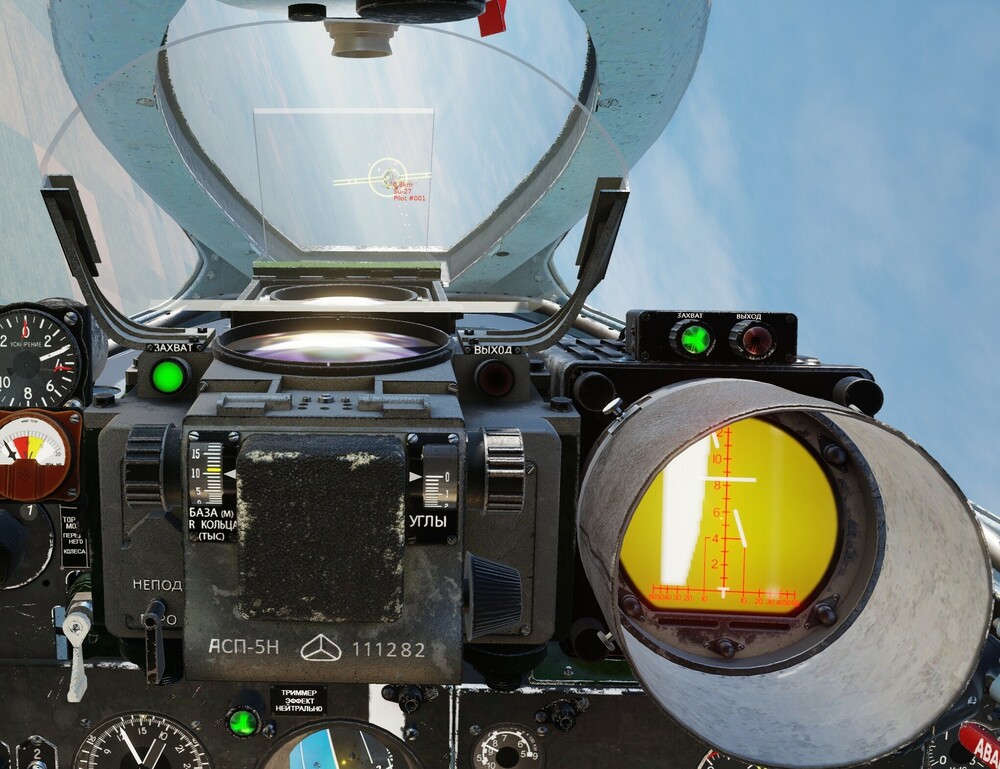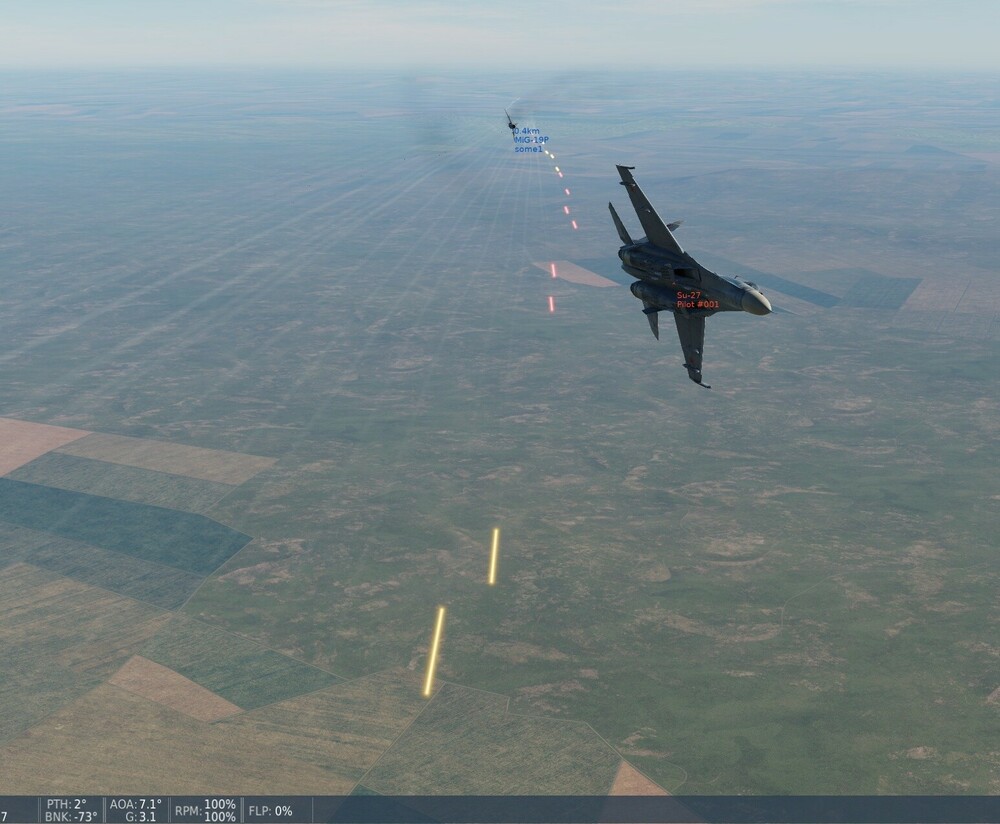-
Posts
3457 -
Joined
-
Last visited
-
Days Won
2
Content Type
Profiles
Forums
Events
Everything posted by some1
-
A stronger FFB base can give you more "dynamic range" to work with, and also will perform better when mounted on the floor and with a long stick extension. Which I guess is the only way to use FFBeast anyway, looking at its size and force output. On the other hand, very large forces aren't that practical for flight sims, unless you go for immersion at the cost usability. I have a Rhino without stick extension, which due to Rhino size is equivalent to a typical spring joystick with ~8 cm extension. And I normally use ~70% gain for most of the flying, especially dogfighting. At 100% I don't fly better, I just get fatigued faster To me that ~3kg pull at the stick is a comfortable compromise for armchair flying. I also have FSSB R3 Ultra and I don't use full forces on that base either. And FSSB R3 at 100% is only half of what real F-16 stick requires from the pilot. But in the game we're not concerned so much about airframe limitations, pilot induced oscillations, passenger comfort, we don't fight g-forces and we are not thrown around the cockpit when performing manoeuvres, so other than immersion, there is not much need to have very heavy sticks. Contrary to what other guy says about Mosquito, that plane in DCS doesn't require stronger base, it just needs small inputs to fly well. One fundamental thing about FFB in general is that it doesn't work with input curves. So you cannot use curves in the software to fix twitchy FM, which some guys over at Mossie forum tried to and learned the hard way. Mosquito also has an issue with trim due to ED hardcoded effects, but this is the same with every FFB device. I haven't followed FFBeast development so I don't know how good is the software provided with the base. But be aware that FFB support in DCS varies between modules, and joystick software is needed to make up that deficit. In Razbam modules FFB is bugged or not existent, even the trim. ED approach in their modules is to simulate only forces that are transmitted through the control column in real life, so if you want additional haptic effects like airframe shake due to g's, buffeting, VRS, runway bumps, gun firing etc. all that needs to be provided by the joystick software. Some other modules like Deka's JF-17 or Heatblur's F-14 have such effects already built in to some extent. There are other useful things that can be done in the software, like balancing a heavy grip and extension, or rescaling axes to shift the neutral point back to centre if the module doesn't do that (A-10, F-14) If you plan to play other games, then FFB support varies there too, Il-2 is pretty good out of the box, MSFS and Xplane don't support FFB at all, and everything has to be provided by external software that reads telemetry data from the sim.
-
I think there are two issues here: - One is that the aircraft is quite sensitive in pitch on stock settings, so people tend to set input curves to cure it. But joystick curves and FFB don't work together well, and anyone setting curves is asking for troubles. That's how it is for all DCS modules, and, to my knowledge, other games too. - The second issue is that DCS "simulates" forces on the stick being to high for the pilot to manage, by repositioning the stick by itself, without affecting FFB. You can't utilize full stick deflection at high speeds, the game will limit you to a smaller window around the current trim setting. You can see this when the aircraft is not trimmed and you accelerate, the stick in the cockpit will move and follow the trim. That is further messing up with FFB and trim interaction. Again, it's not something unique to the Mossie, similar thing also happens in BF-109 for example, but in the Mosquito it's very noticeable even at moderate speeds. Unfortunately neither of these seem to be easy to fix.
-
Not really. ED seems to follow the school of thought that force feedback should transmit only the effects that really exist on the control column, not the general cockpit "shakes". And that, for aircraft with hydraulic boosted controls (Sabre and newer), means there isn't much effects other than trim. I don't remember feeling any shakes from gun shooting in any ED module for that matter. Other 3rd parties sometimes have extra effects built in, like Deka with JF-17 or HB with F-14. If you have VPForce Rhino, you can have all the effects you want through TelemFFB software. Don't know about other brands of FFB hardware.
-
Hmm, i don't have this issue. I have recenter view remapped to different key combo (keyboard, not joystick button), and num5 is free to use for other functions.
-

Autopilot - BALT and RALT cannot be engaged
some1 replied to ggerman2862's topic in Bugs and Problems
I agree. The band for autopilot activation is so narrow, it causes issues with most high end sticks without firm centre detent or large deadzone in the middle. Other aircraft in DCS don't have such issue. I couldn't reliably activate the autopilot in the Hornet with VirpilT-50 base, and I still can't with Vpforce. -
You have to map it to something else, that will free the num5. If there is no user mapping, it will default to the num5 key.
-

How to decrease braking power with a brake lever?
some1 replied to motoadve's topic in Controller Questions and Bugs
The grip has both a button and an axis on that lever. First you have to calibrate the axis in the Rhino Software. Then you have to assign that axis (and not the button) in DCS. -
I have them off and start dcs from Windows like any other program. Don't use the dashboard at all.
-
Always nice to see updates to some older modules.
-
Mine has been working for half a year so far with zero maintenance required. Best to check their Discord and look at the support requests there, but I don't think there are any serious issues so far. A few people damaged the thread on the part where you screw the grip on, but that's fairly easy to replace. Belt drive may need tensioning after a while.
-
The heading indicator should have four fixed markers at 0, 180, +45 and -45 positions, allowing for precise orientation of the compass card. They are missing in DCS. You can spot them on every real cockpit photo of the instrument.
-
Yawn. Wake me up when there's a meaningful performance difference between gen4 and gen5 in the games we can play on a PC. And by meaningful i don't mean "0.5 s faster loading". Then I'll go and but gen5 drive, most likely with better specs, and for a fraction of price of what is available now. Until then, well, at least you can keep getting excited about benchmarks.
-
Nope. What I'm stating is that in real world applications the actual technology inside the disk is the primary thing which determines performance. The interface also matters to some extent, but not to the level synthetic benchmarks suggest. The current PCIe Gen.5 disks can produce huge numbers in synthetic throughput benchmarks, but it does not translate to practical results much. Direct Storage works on any NVMe disk, even Gen. 3. So far in that one game which has Direct Storage and which people bothered to test, Gen. 4 disks are basically as fast as Gen.5. And while Gen.3 is slower, it's nowhere near the difference you can see in CrystalDiskMark or other benchmark software. https://www.tomshardware.com/news/directstorage-testing-shows-pcie-3-drives-are-basically-as-fast-as-pcie-5 As for the current version of DCS, I have both NVMe Gen.3 and Gen.4 drives in my system, and loading times are the same on all of them. I tested. No word from ED on Direct Storage coming to DCS any time soon.
-
The results of practical m2 benchmarks are nowhere near the synthetic ones, especially with computer games. Here you can see that some Gen.4 drives score better than Gen.5, Gen.3 are mixed with gen.4 with no clear difference and sometimes even SATA drives give better performance than NVMe. And overall, the difference between "decent" and "top" drive are so small, they aren't worth paying for. https://www.techpowerup.com/review/crucial-t700-pro-4-tb/16.html
-
That's not how any gunsight works. Wingspan is not an input to a ballistic solution. It's only for the pilot to visually estimate range to target. Which he does not do if there is a radar lock, like in this case.
-
The radar gunsight does not use wingspan setting, it's only for visual aiming without radar lock.
-
In DCS the distance markers presented on the gunsight are weirdly spaced. They are at 2000m, 1200m, and 300m respectively. Which makes it quite hard to estimate distance to target. 2000 meters is way to far for effective gunnery. Even MiG-29 real manual gives 1200 meters max for accurate gun aiming and 800 meters effective gun range. Doubt the older system would fare much better. The marker at 300 meters is useless, it's the same distance you get "breakaway" red lamp next to the gunsight, so it's redundant information. On a real footage you can see the markers were evenly spaced, so it was possible to read the distance like on a scale. https://youtu.be/inOKZ7kIRnA?si=1wqcgD-EM6Q2KDav&t=2379 And here is an interesting interview with technician, who worked on Polish Mig-17s equipped with RP-5 radars. He says the 3rd marker was at 400m and the max effective range was 800 meters. https://www.polot.net/en/wsk-mielec-lim-5-p-radar-izumrud-rp-5-1959-675 So unless Razbam has better source that clearly states that currently implemented markers are correct, they should probably be placed at 400-600-800 meters respectively. Or 400-800-1200 meters if you believe MiG-19 would be set up for longer gunnery range than MiG-17.
-
Since somebody from Razbam on their Discord claims that it's been fixed for ages. No it wasn't. It's as bad in the latest DCS version as it was 3 years ago. New track attacked. 300 meters and I'm not hitting anything. 19-2.trk
-
Many of the early and pre-wwii fighters were like that, including Hurricanes and Spitfires. But none of the models we have in DCS. What we do have is the ability to turn off the automation and control the pitch directly in manual mode in p47, fw190, bf109.
-

Force feedback / trim issue switching front and rear cockpits
some1 replied to markturner1960's topic in DCS: F-14A & B
It happens because it's bugged, simple as that. https://forum.dcs.world/topic/333296-ffb-trim-issues-with-iceman/ You can disable "FFB Enable Trim Offset" special option for the Tomcat, this seems to be the culprit, but you'll loose realistic force trim effect. -
Yes, this has been improved but not fully fixed yet. What works: CDI and bearing pointer now align correctly in all three modes. CDI is centered when the course is set to the bearing pointer. VOR mode shows correct indications. What still does not work: - HSI TACAN mode shows true bearings instead of magnetic - HSI GPS mode shows true bearings instead of magnetic - GPS screen shows true bearings instead of magnetic, which contradicts IFE own manual This can be checked using the mission I posted here: https://forum.dcs.world/topic/316047-vortacan-course-setting-incorrect/?do=findComment&comment=5336338 The waypoint is over at LSV Tacan, so the bearings should be 25 degrees, yet both TACAN and GPS modes show 37 degrees. null
-

SA-342 Gazelle February 2024 update
some1 replied to Polychop Simulations's topic in SA-342M Gazelle
For the keys assignments, most (maybe all) of them will work if you load the old profiles, it's just they are located now in "SA342 Pilot" folder where they used to be in "SA342". Click the "Load Profile" in DCS, point to the old diff file in "SA342", and it should work. -
Bumping this topic again. It's nice that we get PBR updates and other things, but the cockpit geometry still needs to be updated. For the shadows to work correctly in current DCS versions the model has to be closed from all sides (in other words, have a roof and walls on the outside).
-
This is a bit of a mess in DCS. Some addons use full axis travel but shift the centre point with FFB (A-10), some use fixed centre point but don't use full axis travel (F/A-18), and some use fixed centre point but scale the forward joystick movement different than aft. And some addons let you choose, like the F-5. I'm not aware of a setting for A-10 that could change this behaviour in DCS. I recalibrated the axis in my joystick software.




